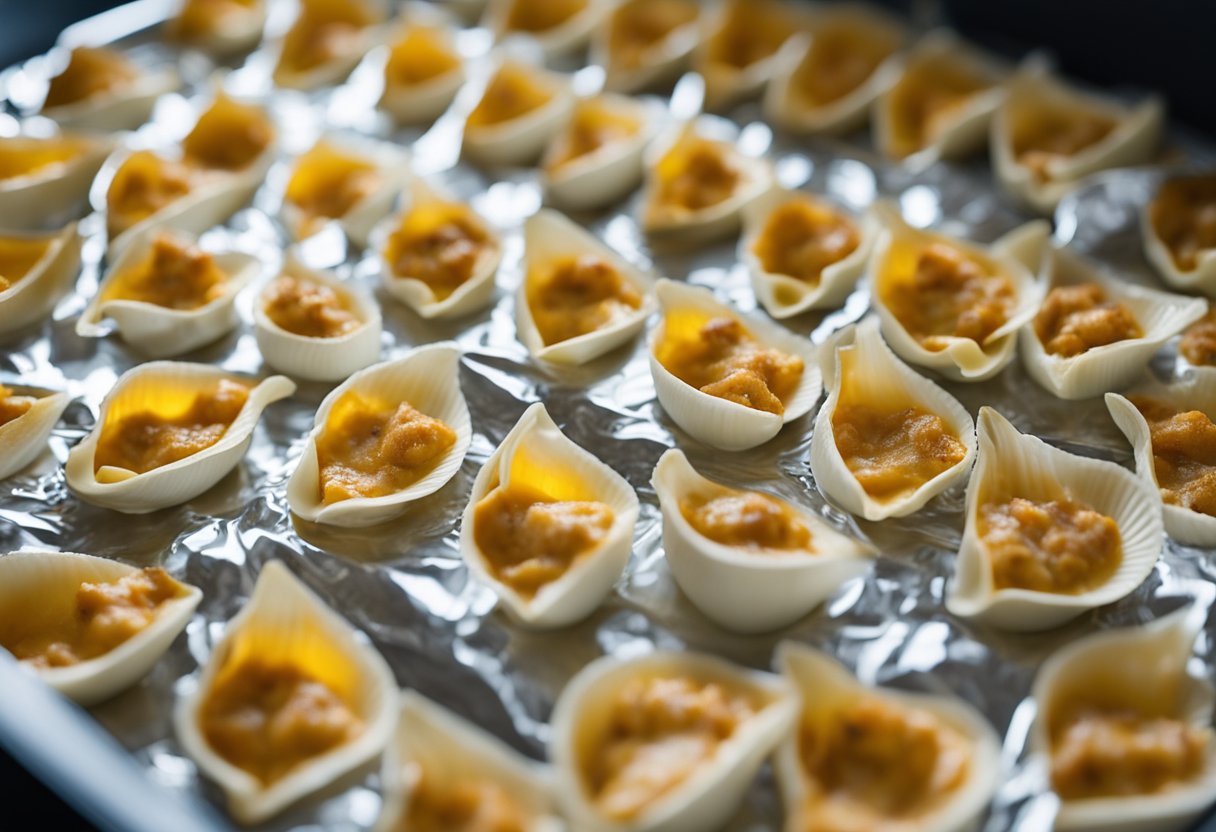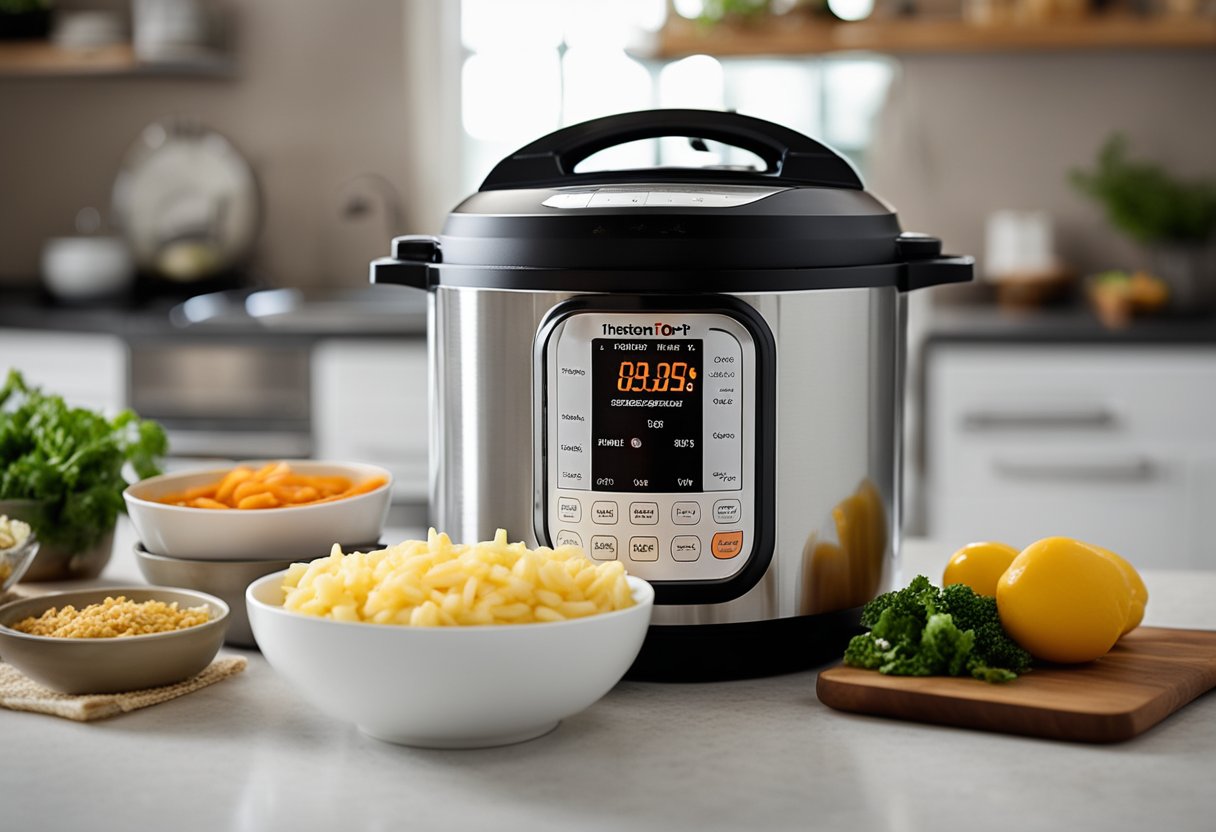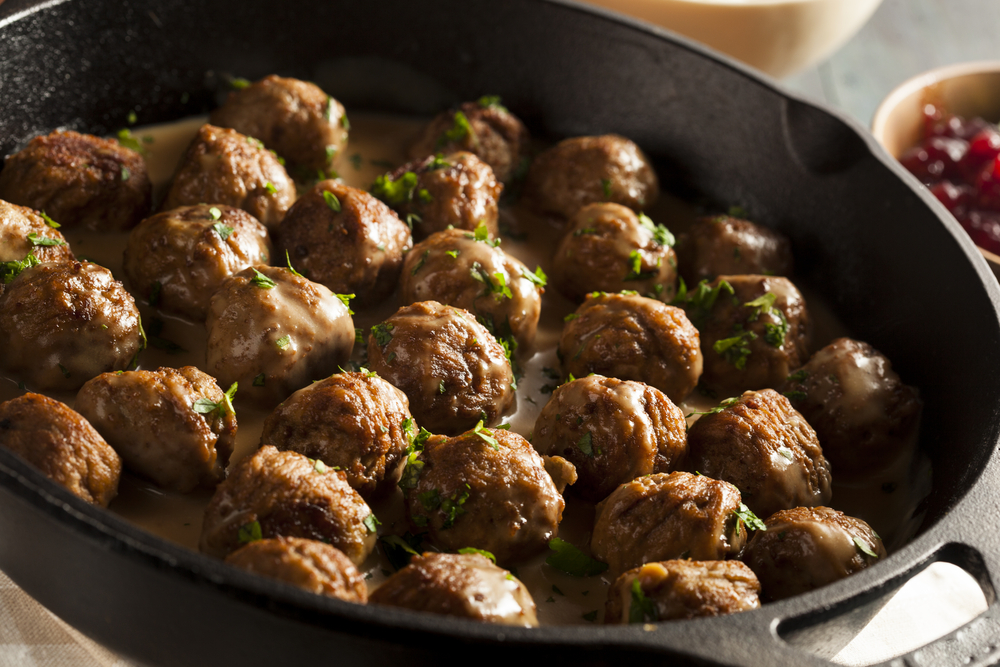As someone who loves cooking, I understand how frustrating it can be to reheat frozen stuffed shells without them turning out dry or overcooked.
Fortunately, there are several ways to reheat frozen stuffed shells that will leave them tasting just as delicious as they did when they were first made.
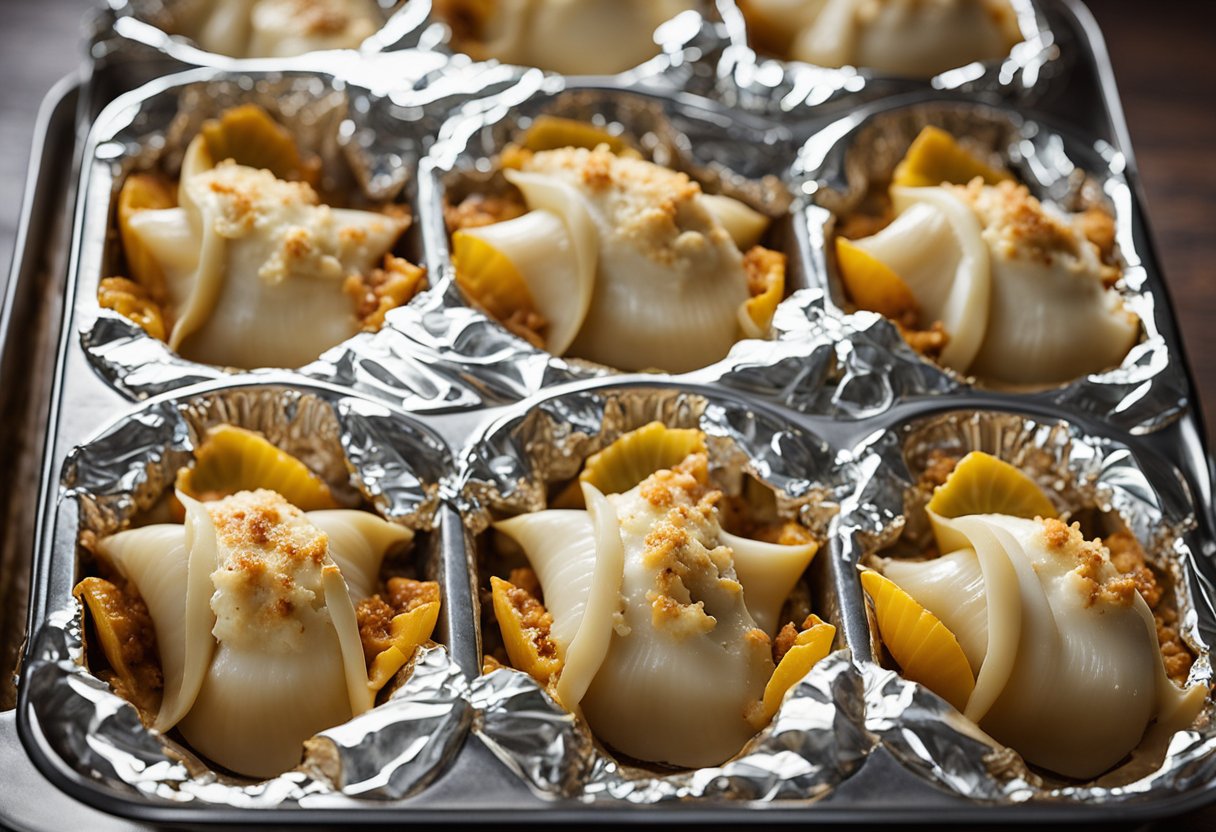
Preparing to Reheat Frozen Stuffed Shells is key to ensuring that they come out perfectly. Whether you’re reheating in the oven, on the stovetop, or in the microwave, it’s important to have everything ready to go before you start.
This includes having a baking dish or pot ready, and any additional ingredients you may need like sauce or cheese.
Reheating in the Oven is one of the most popular methods for reheating frozen stuffed shells. Not only does it ensure even cooking, but it also helps the shells retain their moisture. However, there are other methods available that can be quicker and just as effective.
Key Takeaways
- Preparing to Reheat Frozen Stuffed Shells is essential for success.
- Reheating in the Oven is one of the most popular methods.
- There are several other methods to reheat frozen stuffed shells.
Preparing to Reheat Frozen Stuffed Shells

When it comes to reheating frozen stuffed shells, there are a few things you need to keep in mind to ensure they turn out perfectly.
In this section, I will guide you through the steps to take before reheating your frozen stuffed shells.
Thawing Stuffed Shells
Before reheating your frozen stuffed shells, it’s important to thaw them properly. Thawing them in the refrigerator is the best method as it allows them to defrost slowly and evenly without losing their moisture.
To thaw your frozen stuffed shells, simply transfer them from the freezer to the refrigerator and let them sit for at least 24 hours.
Preheating the Oven
Once your stuffed shells are fully thawed, it’s time to preheat your oven. Preheating your oven is an essential step as it ensures that your stuffed shells will cook evenly and retain their moisture. Set your oven to 350°F (175°C) and allow it to fully preheat.
Note: If using a convection oven, adjust the temperature accordingly based on manufacturer instructions.
While your oven is preheating, prepare your baking dish. Make sure that you are using an oven-safe dish that is the right size to hold all of your stuffed shells.
You can use a glass or ceramic baking dish or a metal baking pan. Grease the dish with cooking spray or butter to prevent the stuffed shells from sticking.
In conclusion, thawing your frozen stuffed shells in the refrigerator and preheating your oven are essential steps to ensure that your stuffed shells turn out perfectly.
By following these steps, you can enjoy delicious, hot stuffed shells that are just as good as when they were first made.
Reheating in the Oven
When it comes to reheating frozen stuffed shells, using the oven is one of the best methods to achieve the same great flavor and texture as the original dish.
In this section, I will guide you through the process of reheating frozen stuffed shells in the oven.
Using Foil for Moisture Retention
The first step to reheating stuffed shells in the oven is to preheat the oven to 375°F. While the oven is heating up, prepare your baking dish.
It is important to use an oven-safe dish when reheating in the oven. A glass or ceramic dish is a good choice as they are both oven-safe and can withstand high temperatures.
To retain moisture, cover the baking dish tightly with aluminum foil, ensuring there are no gaps or openings for heat to escape. This will help to prevent the stuffed shells from drying out during the reheating process.
Baking Dish Setup
Once the oven has reached the desired temperature, place the baking dish with the stuffed shells in the oven. Set a timer for approximately 25-30 minutes and let the stuffed shells reheat.
It is important to check the internal temperature of the stuffed shells to ensure they are fully reheated. The internal temperature should be at least 165°F. You can use an oven thermometer to check the temperature.
If you find that the stuffed shells are not fully reheated after 25-30 minutes, you can leave them in the oven for an additional 5-10 minutes.
If you have any extra sauce, you can add it to the baking dish before reheating. This will help to keep the stuffed shells moist and flavorful.
In summary, reheating frozen stuffed shells in the oven is a great way to enjoy this delicious dish. By following these simple steps, you can ensure that your stuffed shells are fully reheated and retain their original flavor and texture.
Reheating on the Stovetop
When it comes to reheating frozen stuffed shells, the stovetop is a great option. It allows for even heating and control over the heat and moisture levels.
Here are a few tips to ensure your stuffed shells come out perfectly reheated.
Pan Selection and Preparation
Choosing the right pan is crucial for stovetop reheating. A non-stick or stainless steel pan will work well, but avoid using cast iron or aluminum pans as they can react with acidic sauces and affect the taste of the dish.
Before reheating, make sure to prepare your pan by adding a thin layer of sauce or water to the bottom. This will help prevent sticking and ensure the shells heat evenly.
Managing Heat and Moisture
To reheat stuffed shells on the stovetop, heat your pan over medium heat. Once the pan is hot, add your stuffed shells and cover the pan with a lid. This will help trap in moisture and prevent the shells from drying out.
As the shells heat up, check on them periodically and add more sauce or water if needed to maintain moisture levels. Be careful not to add too much liquid, as this can result in a soggy dish.
Overall, reheating frozen stuffed shells on the stovetop is a great option for those looking for even heating and control over moisture levels. By following these tips, you can ensure your shells come out perfectly reheated and ready to enjoy.
Using the Microwave for Quick Reheating
When it comes to reheating frozen stuffed shells, using a microwave is one of the quickest and easiest methods.
Here are some tips on how to use your microwave to reheat frozen stuffed shells.
Microwave-Safe Dish Usage
Firstly, make sure you are using a microwave-safe dish. Glass and ceramic dishes are great options, as they won’t melt or warp in the microwave. Avoid using metal dishes or containers as they can cause sparks and damage your microwave.
Covering and Moisture Control
To prevent your stuffed shells from drying out, cover the dish with a microwave-safe lid or plastic wrap. You can also use a damp paper towel to help retain moisture.
Drizzle a little extra sauce or water on top of the stuffed shells to keep them moist while they cook. This will also help prevent the shells from becoming too dry or watery.
Microwaving leftovers can sometimes cause the flavor to become less intense. To help keep the flavor of your stuffed shells intact, try adding some fresh herbs or spices before reheating. This will enhance the flavor and make your stuffed shells taste as good as new.
Overall, using a microwave can be a quick and easy way to reheat frozen stuffed shells. Just make sure you are using a microwave-safe dish, covering the dish to retain moisture, and adding some fresh herbs or spices to enhance the flavor.
Alternative Reheating Methods
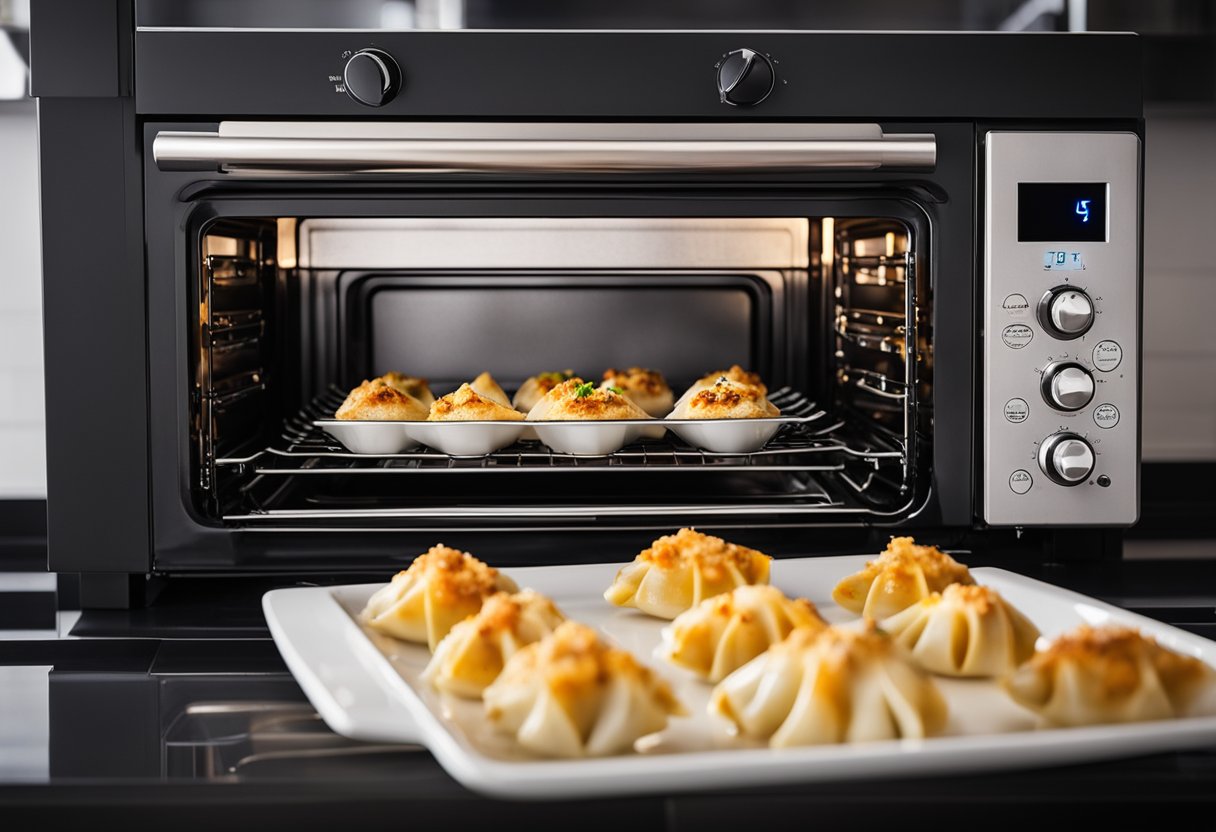
If you’re looking for a quick and easy way to reheat your frozen stuffed shells, the air fryer is a great option. Not only does it give you a crispy top, but it also keeps the shells tender on the inside.
Utilizing the Air Fryer
To reheat your frozen stuffed shells using an air fryer, start by preheating the air fryer to 375°F. While the air fryer is preheating, place the frozen stuffed shells in the air fryer basket. Be sure to leave some space between each shell so that they can cook evenly.
Once the air fryer has preheated, place the basket of stuffed shells in the air fryer and cook for 10-12 minutes. You can check the shells halfway through the cooking time and shake the basket to ensure that they cook evenly.
When the shells are done cooking, carefully remove the basket from the air fryer and let them cool for a few minutes before serving.
Overall, the air fryer is a quick and easy way to reheat your frozen stuffed shells while still achieving a crispy top and tender interior.
Storing Leftover Stuffed Shells
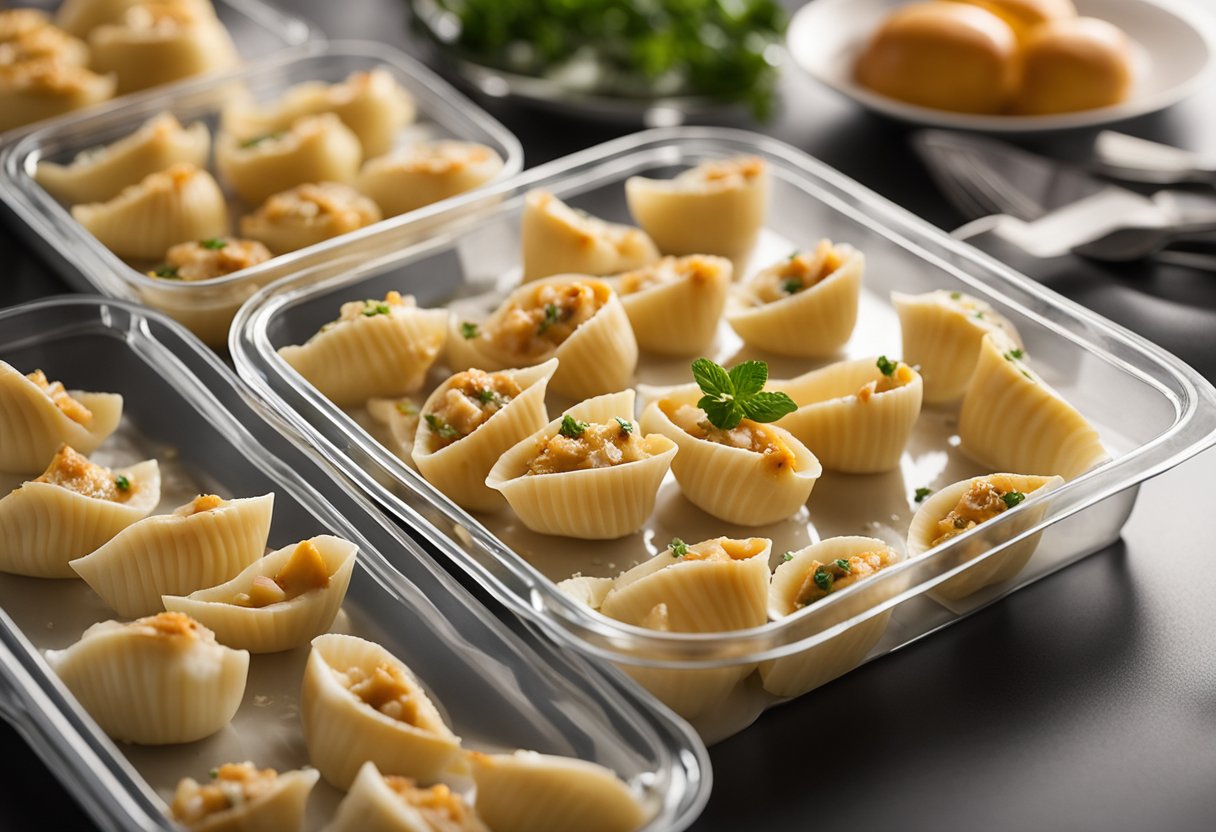
When it comes to reheating frozen stuffed shells, it’s important to store them correctly first. Proper storage will ensure that the stuffed shells remain safe to eat and will taste just as good when reheated.
Here are some tips on how to store leftover stuffed shells.
Airtight Containers and Refrigeration
The best way to store leftover stuffed shells is to place them in an airtight container and to refrigerate them. This will help prevent bacterial growth and mold from forming on the stuffed shells.
Make sure that the stuffed shells are completely cooled before placing them in the airtight container.
When storing leftover stuffed shells in the refrigerator, they can last for up to three days. However, it’s important to note that the longer the stuffed shells are stored, the more the quality will deteriorate.
After three days, the stuffed shells may not taste as good and may not be safe to eat.
To ensure that the stuffed shells remain fresh, make sure to label the container with the date that it was stored. This will help you keep track of how long the stuffed shells have been in the refrigerator and when they need to be consumed.
In conclusion, storing leftover stuffed shells in an airtight container and refrigerating them is the best way to keep them fresh and safe to eat.
Remember to label the container with the date that it was stored and consume the stuffed shells within three days for the best quality.
Related post: How to Reheat Frozen Egg Bites
Frequently Asked Questions
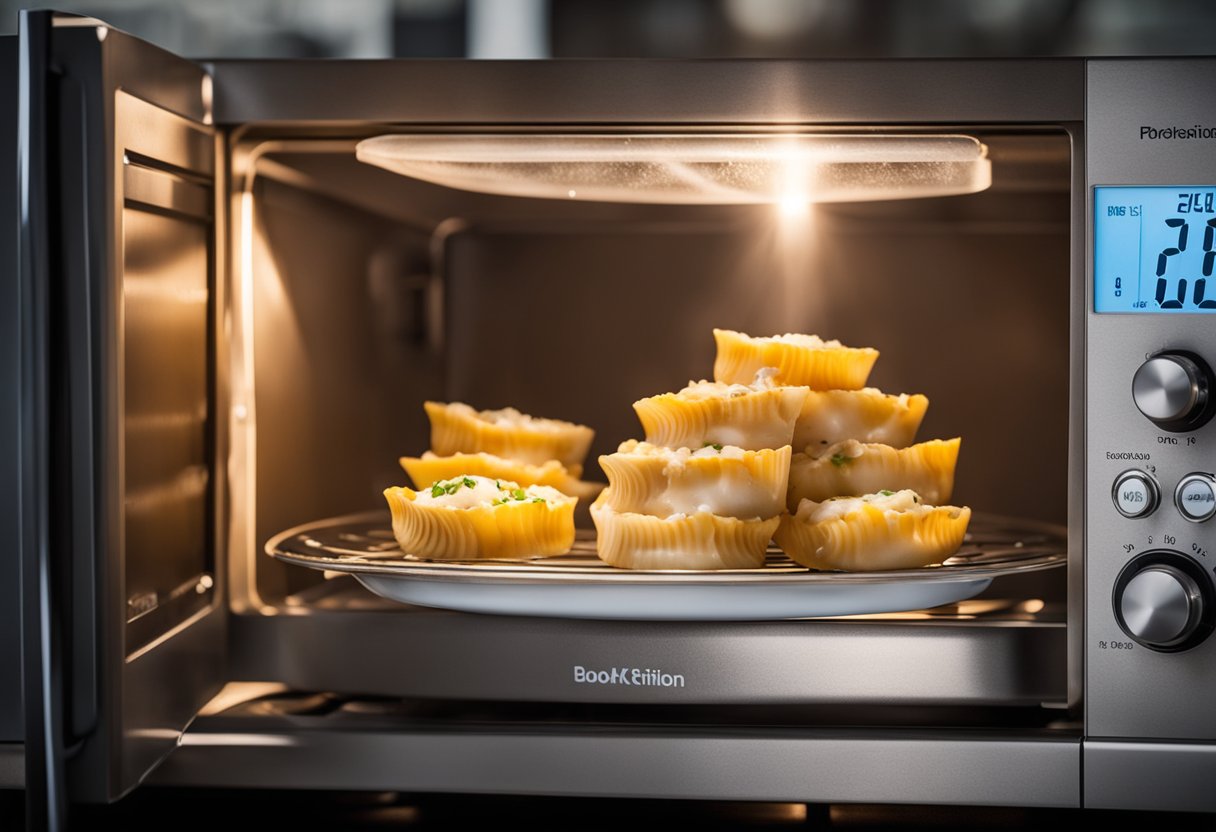
What is the optimal oven temperature for reheating frozen stuffed shells?
The optimal oven temperature for reheating frozen stuffed shells is 375°F (190°C). This temperature ensures that the stuffed shells will cook evenly and retain their moisture. You can preheat the oven to this temperature while you prepare your baking dish.
Can you reheat frozen stuffed shells in an air fryer, and if so, how?
While it is possible to reheat frozen stuffed shells in an air fryer, it is not recommended. The air fryer can dry out the stuffed shells and affect their texture. It is best to reheat stuffed shells in the oven or microwave for best results.
Is it necessary to thaw frozen stuffed shells before baking, and what are the recommended steps?
It is not necessary to thaw frozen stuffed shells before baking. However, if you prefer to thaw them, you can do so by placing them in the refrigerator overnight. Alternatively, you can thaw them in the microwave using the defrost setting.
How long should you reheat stuffed shells in the oven to ensure they are heated through?
To ensure that stuffed shells are heated through, you should reheat them in the oven for 25-30 minutes.
Cover the baking dish tightly with foil, ensuring there are no gaps or openings for heat to escape. Check the stuffed shells after 25 minutes to see how they are doing and if they will need more time.
What are the best practices for storing and freezing cooked stuffed shells?
To store cooked stuffed shells, allow them to cool to room temperature and then place them in an airtight container in the refrigerator. They can be stored for up to 3-4 days.
To freeze cooked stuffed shells, wrap them tightly in plastic wrap and then place them in an airtight container or freezer bag. They can be stored in the freezer for up to 2-3 months.
How do you properly defrost stuffed shells before reheating?
To defrost stuffed shells before reheating, remove them from the freezer and place them in the refrigerator overnight.
Alternatively, you can defrost them in the microwave using the defrost setting. Once they are thawed, you can reheat them using your preferred method.


